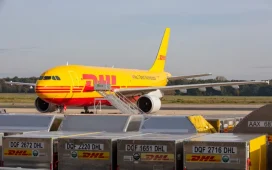Dive Brief:
-
H&M will expand its policy of charging for online returns to more markets worldwide, a spokesperson for the fast-fashion retailer said by email.
-
Since June H&M has charged U.K. customers who aren’t enrolled in its loyalty program 1.99 pounds, or about $2.50 at press time, for online returns, the spokesperson confirmed by email. The return shipping fee in the U.S. is $5.99, except for loyalty members.
-
The fast-fashion company “started charging a fee for online returns in multiple markets some time ago … in a selection of countries mostly in Europe as well as the U.S.,” the spokesperson said.
Dive Insight:
Retailers from Amazon to Zara have slapped customers with return fees in recent months, and others, like Bath & Body Works, have toughened return policies in other ways. Like Zara and others, H&M has targeted online orders.
The question is why. It’s not clear whether the reason is because H&M’s online returns are higher or more costly than in-store returns, the retailer wants to incentivize its loyalty program or something else. The H&M spokesperson noted that the loyalty program is free, but declined to answer questions about why the retailer has instituted and is expanding online return fees.
Returns have emerged as a sore spot in e-commerce. Many customers order multiple items in order to try them out, as they would in a store dressing room, before deciding whether to make a purchase.
“We strive to help our customers to find the right size and fit from the outset, in order to reduce the returns rate,” the H&M spokesperson said.
The National Retail Federation last year found that return rates have held steady at 16.5%, which translates to over $816 billion worth of returned merchandise. That means that, for every $1 billion in sales, the average retailer incurs $165 million in merchandise returns.
Moreover, for every $100 in returned merchandise, there is $10.40 in return fraud, according to the NRF, which has gone so far as to acquire the Reverse Logistics Association, a global trade group for the returns and reverse industry.
According to the NRF’s report, the rate of return at stores and online last year was on par. Costs and logistics differ, however. Retailers have scrambled to contain the skyrocketing expense of returns as consumers bought more online and supply chains buckled, especially during the height of the pandemic.
But it’s a balancing act, as many customers frown on stricter return policies, viewing them as unfair or inconvenient, according to a recent survey from supply chain management firm Blue Yonder. Nearly 60% of respondents say such policies deterred them from making a purchase, the survey found.











